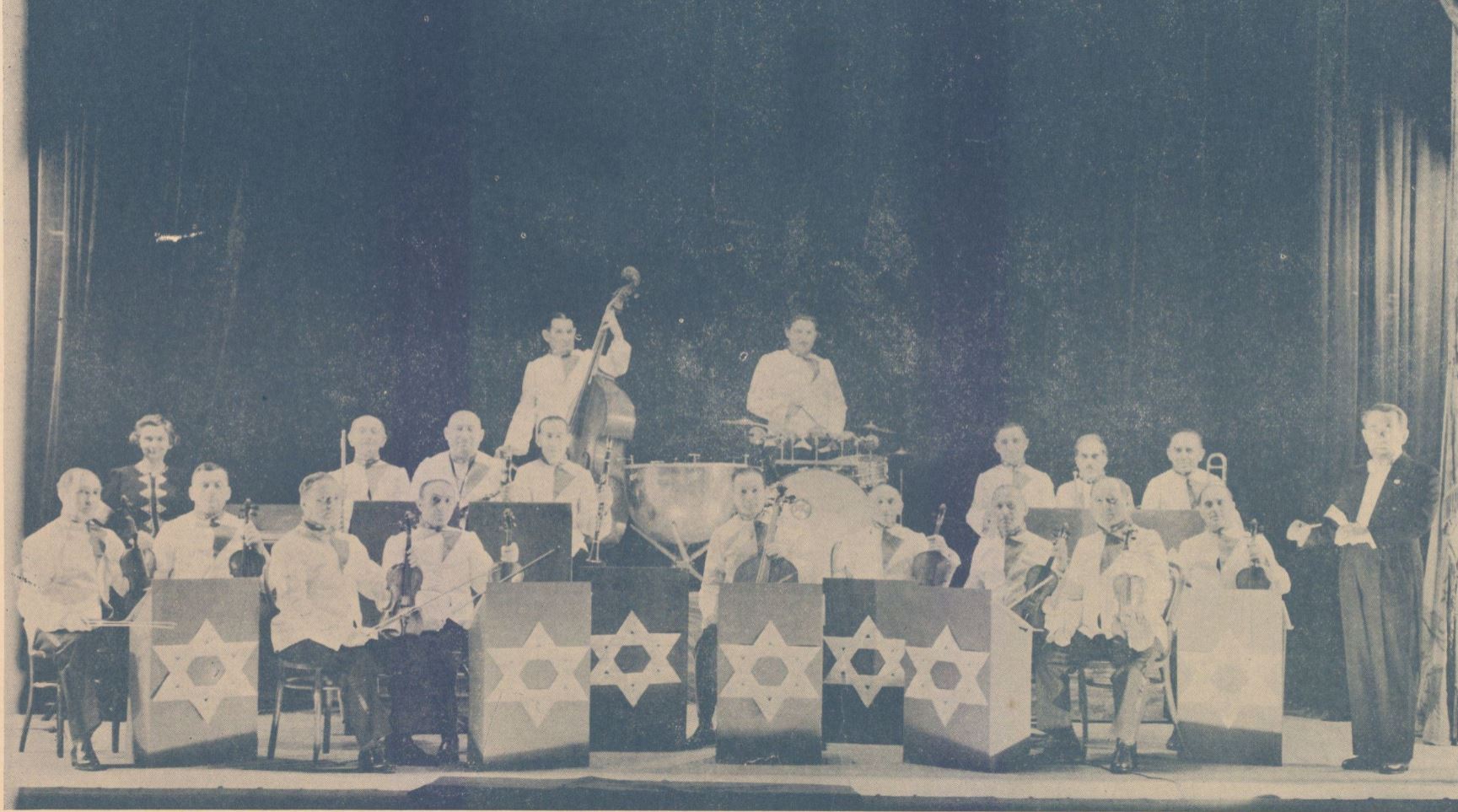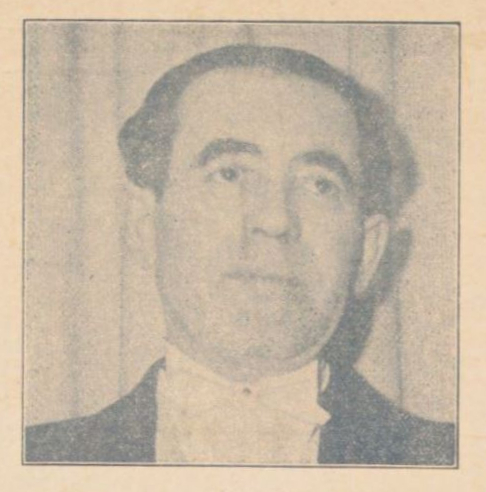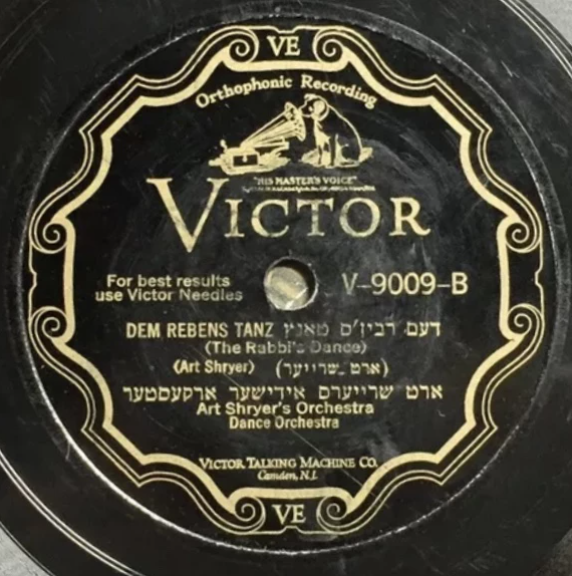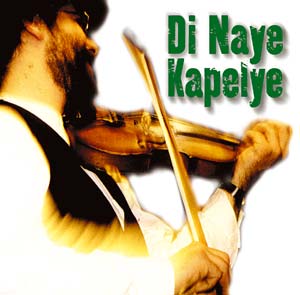Shabbat is almost here
And today we will enjoy a recording from 1929 of one of the compositions that is a landmark in the klezmer repertoire, by Art Shryer’s Orchestra… and a special greeting to Bob Cohen from Di Naye Kapelye and the producer and disseminator Daniel Rosenberg.
 Hello! How are you? I hope well! I have to confess that I am very excited. In 1998, the album Di Naye Kapelye, by the group of the same name, was released. One of my favourite pieces on the album is Dem Rebens Tanz. That piece was even used as a jingle for my radio programme, Mundofonías. Juan Antonio Vázquez and I wrote a lyric for that melody, talking about the programme, singing it ourselves. It was very funny, if you understand Spanish.
Hello! How are you? I hope well! I have to confess that I am very excited. In 1998, the album Di Naye Kapelye, by the group of the same name, was released. One of my favourite pieces on the album is Dem Rebens Tanz. That piece was even used as a jingle for my radio programme, Mundofonías. Juan Antonio Vázquez and I wrote a lyric for that melody, talking about the programme, singing it ourselves. It was very funny, if you understand Spanish.
One day I happened to come across Art Shryer’s Orchestra’s version of that piece, an old recording that began with a brief conversation in which I only understand two words: “tanz” and “freylakh”. I asked some friends on Facebook who could know the meaning and I have a quick answer by Daniel Rosenberg and by Bob Cohen. How could I imagine, 23 years ago, that I would be talking with the protagonists of so many outstanding things that were so far from me?
Apart from all this, two things are happening this weekend. Tomorrow at sunset begins the fast of Tisha B’Av, which commemorates the destruction of the temple, twice, and other calamities of the Jewish people, such as the expulsion of the Jews from England in 1290 and from Spain in 1492, although this was a process and I don’t really know exactly which particular event is attributed to have taken place on Tisha B’Av.
In any case, Tisha B’Av is a day to revel in sadness, in the sense of using it for reflection. I think it is very healthy to have some time when one allows oneself to indulge in grief. I have said before that I am not Jewish and I have no religious beliefs either, but I am very inspired by these traditions that are constructive for human beings.
And the second event of the weekend is that I will receive the second dose of the vaccine (Pfizer). The first dose had no side effects at all. I hope it will be the same again. And a few days after, I will feel more secure and I will be able to hug again, specially my close family, who are all vaccinated.
Whether you fast or not in Tisha B’Av, I wish you a happy Shabbat today and a great end/beginning of the week. I hope you love today’s music as much as I do.
? Do you like Music Before Shabbat? Then, please, spread the word.
But before we get into the subject, which are your plans for August?

As announced before, Daniel Rosenberg is currently the Development & Communications Specialist of KlezKanada. He has explained to me that the festival will include online (from 23th to 29th of August) and in person activities (on 28th and 29th of August). In the online part, you can learn trumpet from Frank London, violin with Alicia Svigals, etc. There will also be some interesting panels by professor Chris Silver from McGill University, who appeared in the edition of MBS about Zohra El Fassia.
The registration for the online program is available now on the website and you can register for single classes or concerts, for complete days or for the full week. Check the options in the website.
About the Art Shryer’s Orchestra
This picture ? is of public domain. It is “a photo of a Jewish symphony orchestra led by Art Shryer, cornetist and klezmer musician, c.1936, from a poster for a Maryland Theater event” and I got it from here.


I have not located a biography as such, other than Wikipedia.
I haven’t even managed to find out where he was born, even searching in Yiddish, although there are several recordings of him and he appears in many databases, also in film, as he arranged music for movies, and in many works about klezmer in the USA in the 20s and 30s. Henry Sapoznik, who has made much research about this kind of personalities and who is quoted very often, hasn’t found out where Shryer was born.
By the way, Sapoznik’s dissemination work is outstanding. Take a look at his website.
About the conversation at the beginning of the music piece
I do not speak Yiddish. And it’s impossible not to wonder what these guys who speak at the beginning of the recording by the Art Shryer’s Orchestra are saying.
23 years after that recording by Di Naye Kapelye in which I listened to the song for the first time, Bob Cohen, leader of the band, has helped me with the translation of those words and explained that, although they mention the word “freylakh”, the piece does not have the rhythm of “freylakh”, but of “husidl”. And Daniel Rosenbert, who has been a pioneer in working with world music, which is the driving force of my life, explained to me the sense of the worlds.
I don’t know if I have already spoken in Music Before Shabbat about my family origins. My family is of humble origins. I was never in contact with artists in my childhood and teen years, but culture in general and music in particular were always highly valued by my close family. I never cease to be grateful that I can now exchange knowledge with people like Bob and Daniel, who have given so much to the world, with the beauty and depth of their works. I am truly moved by these thoughts.So, what do they say? Bob explained it is something like this:
“(DEEP VOICE:) Oh, Grandma, everybody come and dance…”
“Oy, oy, oy you children, you children alone, the rabbi alone, klezmer, play now like you have never played… ”
“(deep ANGRY VOICE) Yeah, yeah, yeah…”
“Oy! Happily! Happily! Happily!”
> For more versions of this melody, the scores and a musicological analysis, check this web page of Klezmeracademy.com <
The page explains that:
About the “husidl” or “khosid” or “khosidl”
The Jewish Music Research Center has a web page about this term, with information from the Lexicon of Klezmer Terminology, about which, they explain that: “In an attempt to advance the cause of klezmer studies Professor James Loeffler, then a graduate student working in Israel, began the Lexicon of Klezmer Terminology (hereafter LKT) in 1996 under the auspices of the Jewish Music Research Centre of the Hebrew University of Jerusalem.”
About the term, I will select a few references:
- “Khusidl, Khosidl, or Khosid: A slow circle or line dance in Hasidic style, in a stately 2/4 rhythm. In some regions of Eastern Europe, synonomous with freylekhs.” Alpert 1996b, p. 59.
- “There were many names for the freylakh, which was the most important Jewish dance. In Hungary they called them khussidls or husit. That word was used for two very different things. It could be used for something identical to freylakhs. But there are other tunes called khussidls which I think originate in vocal music. Some of this music is purely instrumental and some is ambivalent. It could be used as vocal music.” Phillips 1996b, p. 178.
- “The Khosidl / A slower dance in duple meter (2/4 or 4/4), in which the melody moves slowly enough to invite embellishment by clarinet, violin, or flute to a greater degree than allowed by the brighter Freylekh tempo…” Sokolow 1987, p. 19.

About the recording Dem Rebens Tanz
According to Discogs (did I ever mentioned how outstanding is Discogs? The picture ? is from that web too) in the page about this piece, it was released by the label Victor in 1929, as the side B of a disc in which the side A was another piece, Chertskivver Rebens Chazune.
It was recorded in New York City on January 15, 1929 according to Richard K. Spottswood, “Ethnic Music On Records, A Discography of Ethnic Recordings Produced in the United Stages, 1893 to 1942”, vol. 3, p. 1516.
This disc is available in the National Library of Israel (as mentioned in WorldCat.org).
 In 1993, the label Rounder released a compilation curated by Henry Sapoznik called “Klezmer Pioneers: European & American Recordings, 1905-1952”. The album begins with this piece. Other artists included are Sam Musiker, Belf’s Romanian Orchestra (of which I already talked in this previous edition), Abe Schwartz’s Orchestra, Naftule Brandwein’s Orchestra (who also starred a previous MBS) and a good bunch more.
In 1993, the label Rounder released a compilation curated by Henry Sapoznik called “Klezmer Pioneers: European & American Recordings, 1905-1952”. The album begins with this piece. Other artists included are Sam Musiker, Belf’s Romanian Orchestra (of which I already talked in this previous edition), Abe Schwartz’s Orchestra, Naftule Brandwein’s Orchestra (who also starred a previous MBS) and a good bunch more.
As I mentioned before, the first time I listened to this song it was in the album by Di Naye Kapelye, called like them, and released in 1998 by the label Oriente Musik. This is a really outstanding album and the version of Dem Rebens Tanz is as enjoyable as the recording of 1929. Some months ago I dedicated the MBS to talk with Bob Cohen from Di Naye Kapelye and it was the piece we listened too. Check it, here. If you want more music, one of my favourite pieces of that album is Hangu and Freylachs from Podoloy.
Click the picture to listen to the Art Shryer’s Orchestra playing Dem Rebens Tanz:
Shabbat Shalom
Araceli Tzigane | Mapamundi Música
And we share with you one hour of music for joy in this playlist.
To know more about our artists, click here.
May you always find the light in your path.
